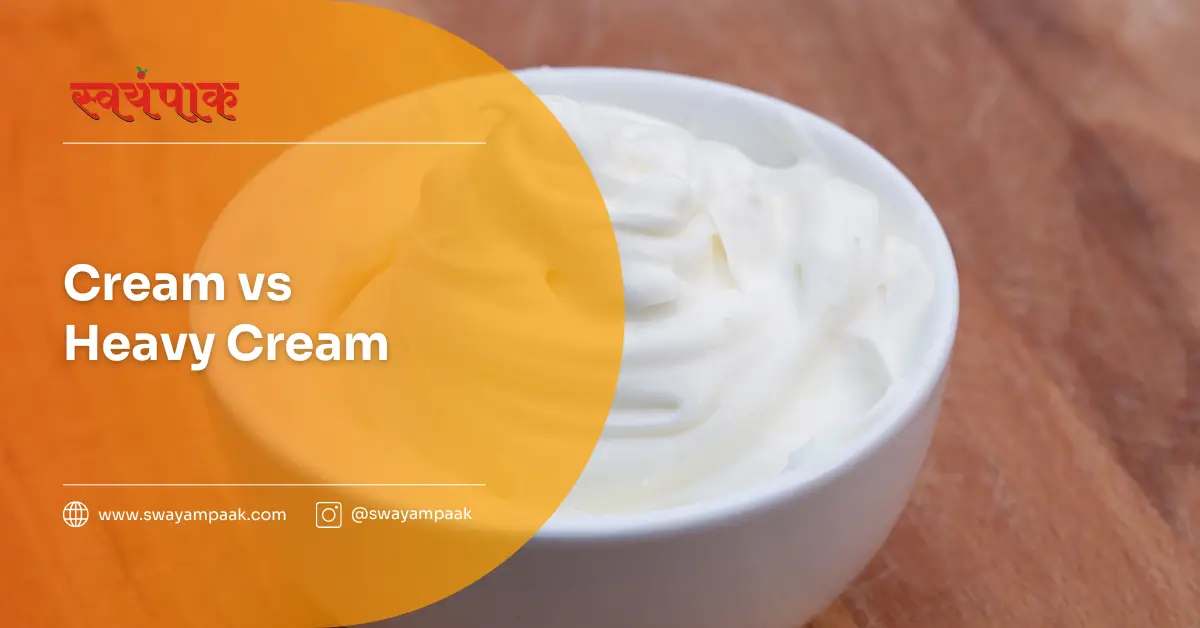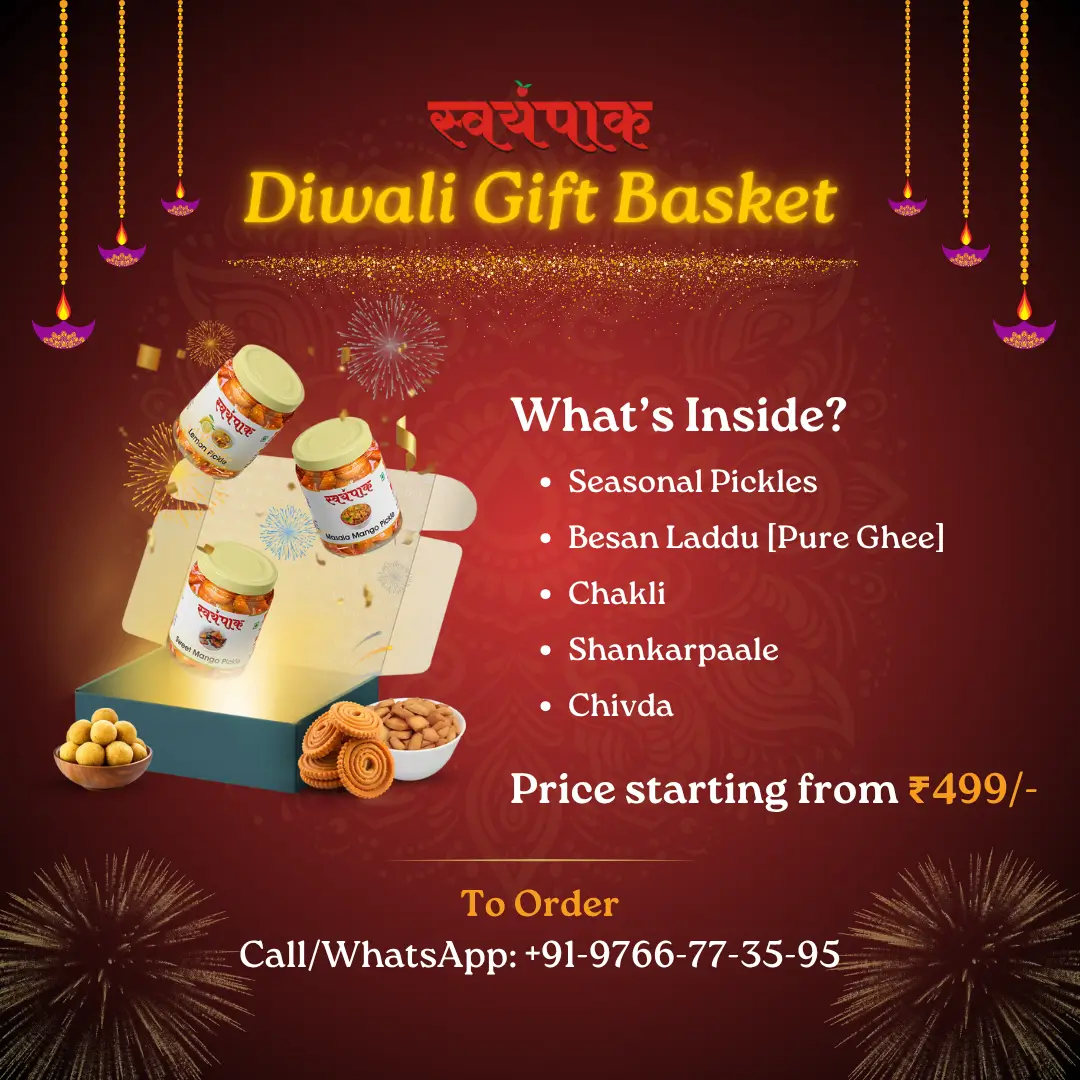Over 860 million tonnes of milk are produced worldwide each year by the dairy industry, and cream and heavy cream are necessary ingredients in both home and commercial kitchens.
In India, demand for premium dairy products like heavy cream has grown by 18% in the past five years, as more households embrace baking and continental cuisine.
With advice specific to Indian kitchens and international cooking standards, this guide about cream vs heavy cream offers ten professional suggestions to help you select the appropriate cream for every recipe.
While heavy cream has 36% or more fat, which makes it richer and perfect for whipping, cream only has 18–30% fat. In five years, India’s demand for heavy cream has increased by 18%, keeping pace with worldwide baking trends. For lighter dishes, use cream; for desserts, sauces, and coffee that has a richly smooth texture, use heavy cream.
- What is Cream (Regular Cream)?
- What is Heavy Cream?
- Comparison of Nutrition: Cream vs Heavy Cream
- Differences in Texture and Whipping
- Comparison of Cooking Performance
- Is It Possible to Replace One with the Other?
- Greatest Applications in Cooking
- Optimal Applications in Baking
- Cream vs Heavy Cream in Indian Cooking
- Ideal Applications for Dressings and Salads
- Tips for Storage and Shelf Life
- Professional Advice and Typical Errors
- Commonly Asked Questions
- Wrap-up
What is Cream (Regular Cream)?
Fresh cream, also known as regular or light cream, is the milk fat that rises to the top of whole milk. In commercial production, it’s separated via centrifugation.
Key Features
- Fat content: 18–30% (typically around 25%)
- Texture: Smooth and pourable
- Colour: Pale ivory
- Shelf life: 5–7 days in the refrigerator after opening
Best Uses
- Coffee and tea
- Light soups and sauces
- Dessert drizzles and fruit
⚠️ Not to be confused with sour cream or crème fraîche, which are cultured and tangy.
What is Heavy Cream?
Heavy cream (also called heavy whipping cream) contains the highest fat concentration in dairy products.
Key Features
- Fat content: 36–40%
- Texture: Thick, velvety
- Whipping ability: Forms firm, stable peaks
- Heat stability: Less prone to curdling under heat
Best Uses
- Whipped cream toppings
- Alfredo and rich pasta sauces
- Ganache, ice cream, and creamy soups
Comparison of Nutrition: Cream vs Heavy Cream
| Nutrient (per 1 tbsp) | Heavy Cream | Fresh Cream |
|---|---|---|
| Calories | 51 | 35 |
| Total Fat | 5.4g | 3.5g |
| Saturated Fat | 3.4g | 2.2g |
| Carbohydrates | 0.4g | 0.4g |
| Vitamin A | 4% DV | 2% DV |
| Protein | 0.4g | 0.3g |
Health Considerations
- Heavy cream: Higher in calories and fat-soluble vitamins (A, D, E, K); keto-friendly
- Regular cream: Better for calorie-conscious uses
Differences in Texture and Whipping
Heavy Cream
- Whipping time: 2–4 minutes with an electric mixer
- Volume: Doubles
- Best temperature: 35–40°F (cold)
- Peak stability: Holds shape for hours
Fresh Cream
- Whipping result: May thicken slightly, but doesn’t hold peaks
- Reason: Insufficient fat content
- Use: Liquid enrichment only
💡 Pro Tip: Chill your bowl and beaters for 15 minutes before whipping heavy cream.
Comparison of Cooking Performance
Heat Stability
Heavy Cream:
- Resists curdling
- Suitable for simmering and reductions
- Safe up to 180°F
Regular Cream:
- Prone to curdling
- Ideal for low heat or finishing touches
- Use below 160°F
Acid Compatibility
- Heavy cream: Better with acidic ingredients like wine or citrus
- Regular cream: May separate under acidity
Is It Possible to Replace One with the Other?
Fresh Cream → Heavy Cream
✅ Acceptable for:
- Coffee and tea
- Light soups (low heat)
- Some batters (texture may vary)
Heavy Cream → Fresh Cream
❌ Not suitable for:
- Whipping
- High-heat cooking
- Recipes requiring reduction
DIY Heavy Cream Substitute (for cooking only)
- ¾ cup whole milk + ¼ cup melted butter = 1 cup heavy cream substitute
Greatest Applications in Cooking
With Fresh Cream
- Soups: Tomato bisque, mushroom soup, vegetable broth
- Sauces: Pan sauces, salad dressings
- Drinks: Irish coffee, chai, hot chocolate
With Heavy Cream
- Rich Sauces: Alfredo, Béarnaise, reductions
- Soups: Chowders, potato-leek, creamy chicken
- Global Dishes: Indian curry, French gratins, Italian risotto
Optimal Applications in Baking
Baking with Fresh Cream
- Moisture for: Scones, muffins, quick breads
- Light finishes: Pastry glazes, whipped frostings
Baking with Heavy Cream
- Essential for:
- Whipped toppings
- Panna cotta, mousse, ganache
- Ice cream, custards
- Tiramisu, cream pies
💡 Baking Tip: Slight overwhipping helps cream hold shape in layered desserts.
Cream vs Heavy Cream in Indian Cooking
In Indian cooking, both cream and heavy cream are used, but they serve different purposes and are used at different times.
🥣 Cream in Indian Cooking (Usually Fresh or Light Cream)
✅ Most Often Used:
- In home cooking, especially in North India
- As a mild thickener and finisher for gravies and curries
🍛 Common Uses:
- Butter Chicken (Murgh Makhani) – cream added at the end for smoothness
- Paneer Butter Masala / Shahi Paneer – light cream to enrich the gravy
- Dal Makhani – a swirl of cream added just before serving
- Korma or White Gravies – light cream for body and subtle flavor
- Desserts – like fruit cream or Malai Kulfi
🎯 Why Use Light Cream?
- Easily found in tetra packs or dairy stores in India
- More affordable and common in many home recipes
- Lower fat content keeps delicate spice balances from being too strong
🧈 Heavy Cream in Indian Cooking (Used Sparingly)
✅ Used More Often In:
- Restaurants and hotel kitchens (commercial settings)
- Fusion recipes or when trying to make something as rich as it is in other countries
🍛 Common Uses:
- Thick, rich gravies in fancy restaurants
- Garnishing fancy dishes with thick cream swirls
- Indian fusion desserts like mousse, cheesecake, kulfi, and more
- Making paneer or malai at home with milk or cream that has more fat in it
- Making stabilized whipped cream for cakes and pastries (more in bakeries)
🎯 Why Not More Common?
- More expensive and not easy to find in all parts of India
- Indian dishes get their richness from spice and ghee more than from cream
- Heavy cream’s firmness and fat content aren’t always needed in traditional recipes
👩🍳 What Indian Cooks Do All the Time
- Malai (milk cream) skimmed off boiled milk is often used instead of store-bought cream
- Use Amul Fresh Cream (25% fat) or homemade malai in everyday dishes
- For richer dishes or whipping, heavy cream from imported or premium brands (e.g., Rich’s, Elle & Vire) is used
Ideal Applications for Dressings and Salads
Cream Dressings (Fresh Cream)
- Light green salads
- Fruit salads
- Herb vinaigrettes
- Light Caesar alternatives
Thicker Dressings (Heavy Cream)
- Coleslaw, chicken or potato salad
- Pasta salad
- Richer texture and longer shelf life
Tips for Storage and Shelf Life
Proper Storage
- Temperature: 35–38°F (store at back of fridge)
- Container: Original or airtight glass
- Avoid odours: Cream absorbs fridge smells easily
Freshness Indicators
- Good: Sweet smell, smooth texture
- Bad: Sour scent, lumps, yellow tint, mould
Shelf Life Tips
- Buy close to expiration for better freshness
- Use clean utensils to avoid contamination
- Never return unused cream to its container
Professional Advice and Typical Errors
Pro Tips
- Always chill the cream for whipping
- Don’t overwhip – soft peaks for folding, firm for piping
- Add sugar slowly to sweeten the cream
- Stabilise with gelatin for lasting whipped cream
- Use an immersion blender to rescue broken soup cream
Common Mistakes
- ❌ Using warm cream for whipping
- ❌ Adding regular cream to boiling liquids
- ❌ Leaving cream out at room temperature
- ❌ Overwhipping turns cream into butter
- ❌ Trying to whip regular cream (won’t work)
Commonly Asked Questions
Q: Can cream or heavy cream be frozen?
A: Heavy cream freezes better. Use for cooking (not whipping) after thawing.
Q: What’s the difference between heavy cream and whipping cream?
A: Whipping cream has 30–35% fat; heavy cream has 36–40%. Both whip, but heavy cream is more stable.
Q: Why does cream sometimes taste bitter?
A: Usually a sign of spoilage or absorption of strong odours.
Q: Can I turn regular cream into heavy cream?
A: No. You can dilute heavy cream, but you can’t increase fat content in regular cream.
Wrap-up
The cream vs heavy cream topic can be a very lengthy debate. The point is, both of them have unique uses as per various cuisines.
Understanding the “cream vs heavy cream” facts allows you to elevate your cooking and baking.
- Fresh Cream (18–30% fat): Great for light sauces, coffee, and dressings
- Heavy Cream (36–40% fat): Perfect for whipping, sauces, desserts, and high-heat cooking
Choose your cream based on recipe needs. When in doubt, heavy cream offers more versatility.



